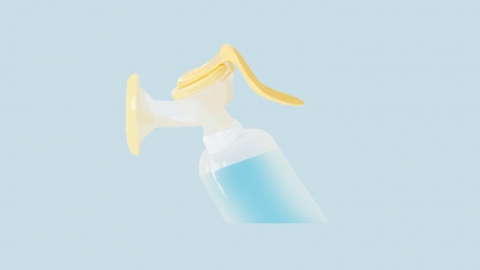Why can't breast milk be expressed using a breast pump, and what should be done?
Generally, a breast pump may not express milk due to reasons such as thickened breast milk, mental stress or pressure, flat or inverted nipples, blocked milk ducts, or mastitis. Treatment options include general therapies and medications under a doctor's guidance. Detailed analysis is as follows:

1. Thickened Breast Milk
Inadequate water intake and excessive maternal consumption of greasy foods can increase the proportion of solid components in breast milk. Thickened milk may not flow easily through the milk ducts or a breast pump. Adjust the diet by reducing greasy foods and increasing intake of fruits and vegetables. Drinking a cup of warm water before breastfeeding may also help.
2. Mental Stress or Pressure
Various stress factors in life, such as family or work-related pressures, may affect the endocrine system, leading to reduced milk production or contraction of the milk ducts, which can result in the inability to express milk using a breast pump. Mothers should manage their emotions, relax by listening to music or taking walks, and receive support and care from family members.
3. Flat or Inverted Nipples
Congenital poor nipple development may result in flat or inverted nipples. The funnel of the breast pump may not fit the nipple properly, preventing the formation of effective negative pressure, thus making it difficult to express milk. A nipple corrector may be used, or the nipple can be gently pulled outward manually before feeding to make it protrude.
4. Blocked Milk Ducts
Blocked milk ducts may result from fat or other substances depositing in the ducts, incorrect breastfeeding posture, or tight undergarments exerting pressure on the breasts. These factors can hinder the normal flow of milk. It is recommended to adjust the breastfeeding posture to ensure the baby latches correctly, wear appropriate undergarments, and apply a warm compress to the breast before feeding. If milk remains after feeding, gently express the residual milk.
5. Mastitis
Mastitis may occur due to bacterial invasion following nipple damage or milk stasis. Inflammation causes breast tissue congestion and swelling, which compresses the milk ducts. Changes in milk composition may further worsen duct blockage, leading to the inability to express milk with a breast pump. Symptoms may also include redness, swelling, and pain in the breast. Treatment may include medications such as penicillin V potassium tablets, roxithromycin dispersible tablets, or azithromycin tablets under a doctor’s guidance. During this time, suitable infant formula may be used for the baby's feeding.
During breastfeeding, mothers should maintain nipple hygiene, master the correct feeding posture, breastfeed on demand, maintain a nutritionally balanced diet, and monitor their breasts for abnormalities such as lumps or pain.




